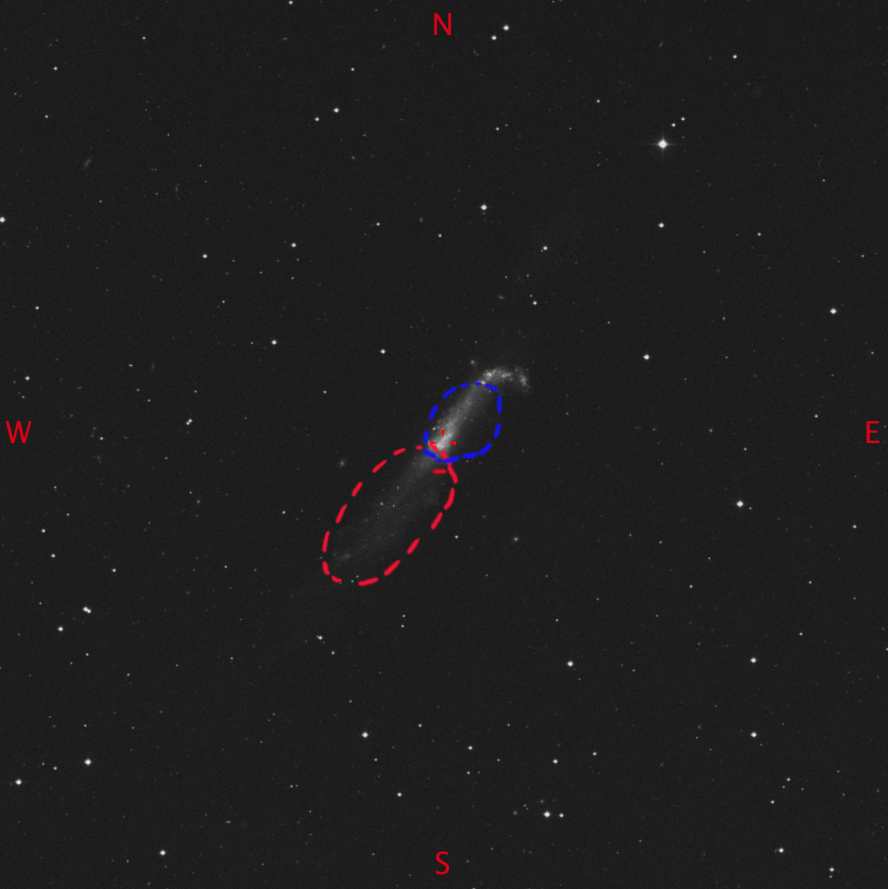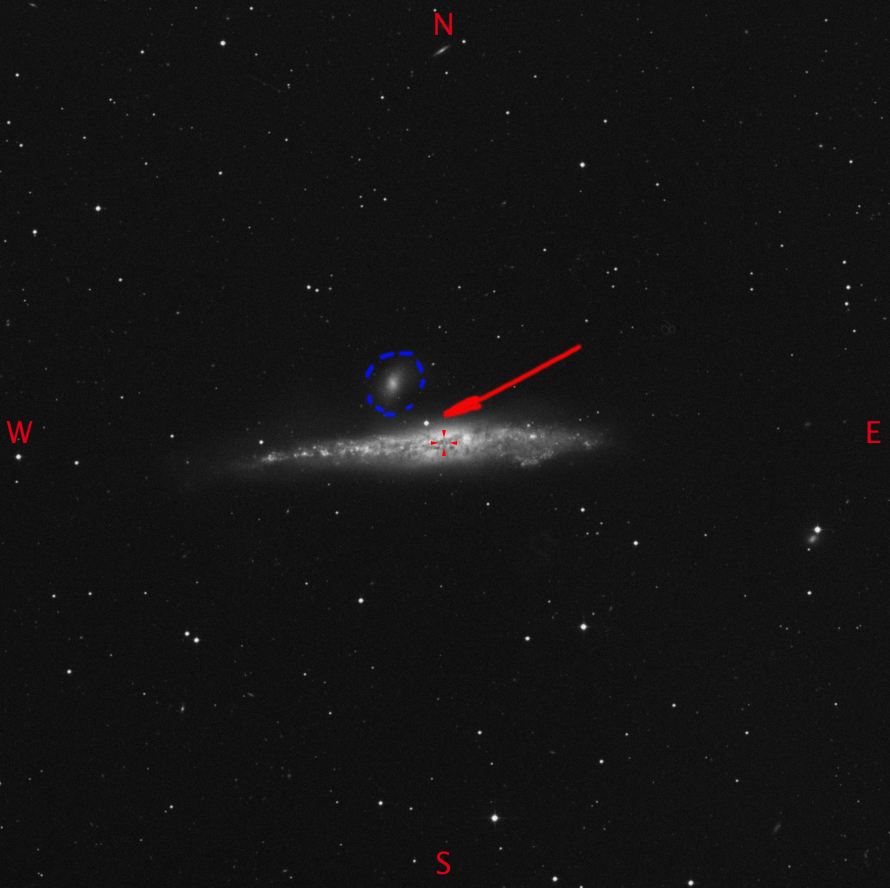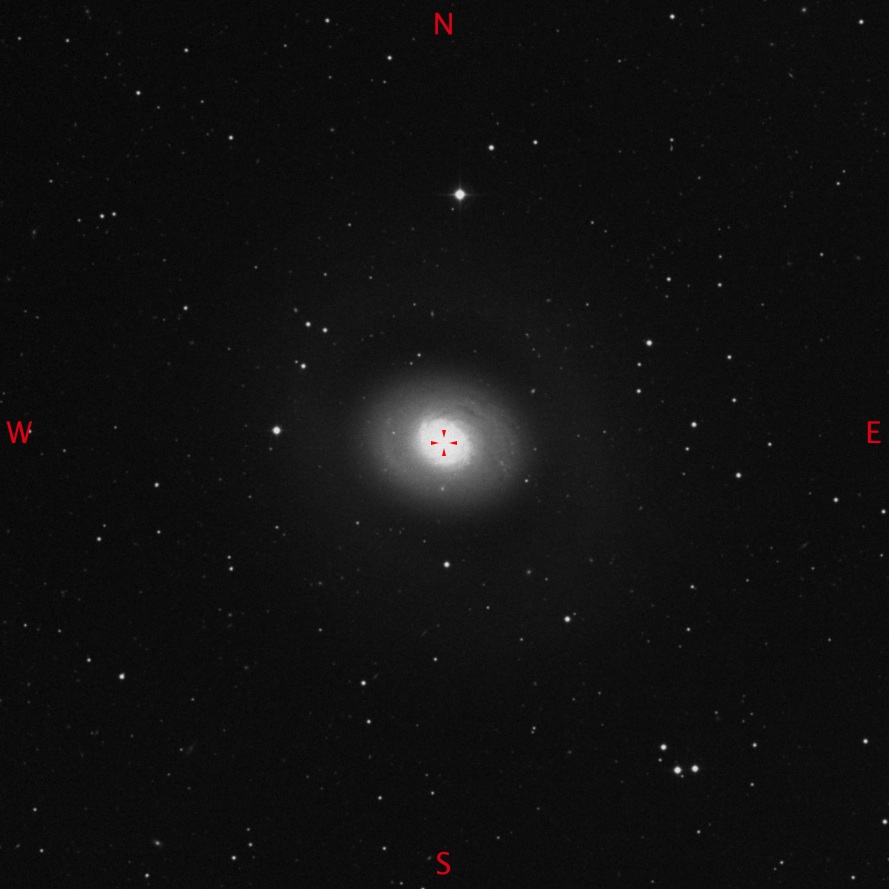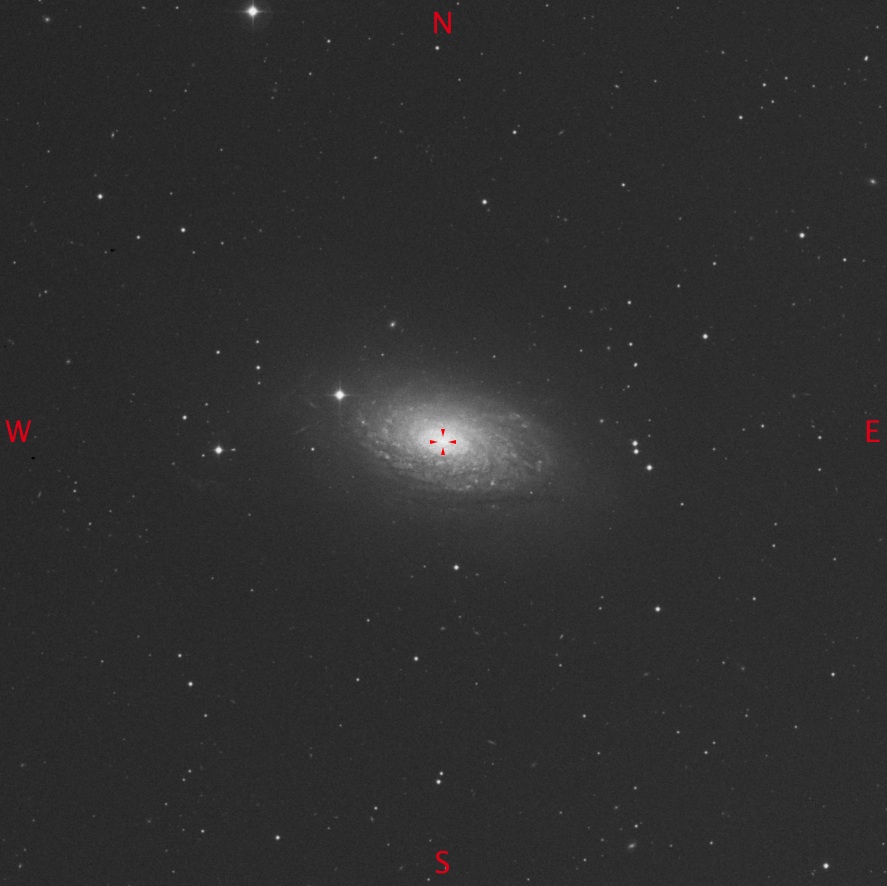Nearly the end of April and this has been my first proper observing session of 2014. A really terrible start to the year!
The one or two clear nights in March weren’t helped buy pointing problems on the G11. The RA motor decided to go tits up and slews were 20° off, at boot up. I had to resort to a ‘Cold Start’ and rebuild the pointing model. Things will be okay for 10 minutes or so, before the dreaded ‘Motor lags’ error message would appear. At one point, even before pressing the ‘Cold Start’ option at boot up, resulted with the mount slewing in RA till it hit the stops. My mount is well over 10 years old and the motor design has now been superseded with a new Hi-Torque version. Now I’m not sure why, but the new and old motors cannot be mixed on the same mount, without strange pointing and slewing errors, so I’ve has little choice but to order two new ones.
While I await these to turn up , I remembered that Frank, a fellow G11 owner, had the same problem last year and just happens to have one of his old motors on the shelf. A quick phone call and I’m up and running again.
There have been a couple of occasions where there has been a forecast of a short period of clear skies and rather than open up the DBO for just half an hour, I have discovered what I call ‘Conservatory Observing’ . My TMB 80 is fitted on my Alt/Az Sabre mount, where it’s ready at a moments notice to be moved to the conservatory door, which fortunately has a wonderful Southerly aspect. Whatever happens to be passing by, is what gets observed in these momentary sessions. This kind of astronomy has a number of advantages. One is warmth – it’s a hell of a lot more comfortable than freezing ones wotsits off standing around in a cold observatory 🙂 and when set at the right height, I can sit in a nice comfortable chair to observe.
I’ve never been adept at star hopping, but when fitted with a 26 mm eyepiece, the resulting 2.8° field of view makes things easy enough to find your way around. Rather than muck around with printed charts, which are never oriented the right way to match an eyepiece view, I fire up my iPad which is loaded with the latest pro version of Sky Safari 4. This has been configured to display a 2.8° field reticule and the chart is flipped horizontally, so it’s easy enough to make out star patterns on the screen, which match those seen through the eyepiece. With an inverted screen – Black stars on a White background- the screen brightness can be turned down to much lower light levels than would otherwise be the case. There is also the option of setting the red filter as well, which takes off any remaining brightness. Once I found the right level, I found my dark adaption wasn’t badly affected and everything worked a treat.
Three eyepiece hops West from Denebola in Leo, placed the three galaxies of M66, M65, and NGC 3628 in the centre of the eyepiece -simples! While NGC 3628, was barely visible, the other two were easily seen, if a little small. Probabaly not the best scope for small faint fuzzes, but the brighter ones can been seen. I really do need to junk that horrible Meade 26mm for something of better quality though.
Star hopping is a skill I would like to become proficient in. The problem with go-to is that you never really learn where things are, or how to find them. Navigating your way around manually takes a bit of practice, but once learned, the objects you find on your own, tend to become easier to find again in the future.
Anyway, back to my first proper observing session of 2014.
Session Data
- Date: 23/4/2014
- Time: 20:51 – 22:40 UT
- Seeing: I Mostly Stable,
- Transparency: Poor.
The sender of my weather station is no longer functioning so I cannot provide data on a pressure, dew point, humidity or windspeed.
This was one of the weirdest observing sessions I’ve had. Conditions just before darkness came, were super. Stable stars and transparency as clear as a bell. By the time I got the observatory open, cloud had started to roll in patches followed by spells of hill hugging fog. I was about to right the whole night off, but pointed the scope at my first target anyway -more in hope than anything else – between he slow moving gaps in the cloud and Bingo! Things looked pretty good despite the fog coming and going. There seemed to be moments of extreme clarity followed by an almost total whiteout of Fog.
NGC4656

In the Altair Astro 250mm, Delos 14mm, 145 X, 29.8′, West is to 9.:30 O’Clock. The brightest star in the FOV is a 10th Mag at the edge of the FOV at the NE.
The Galaxy is oriented SW/NE and is asymmetrical with the thickest part of the structure towards the SW at the centre of the FOV. The section marked in Blue looks a little like a comet core with a thin tail pointing out towards the N/E. At the N/E end of this edge is a Hook, which is a colliding Galaxy NGC4657, but this wasn’t seen.
The whole S/W end of the galaxy ( Marked in Red) wasn’t seen either, so the S/W extremity of this galaxy was in fact the core itself.
NGC4631

While the cloud has cleared, the transparency is not good. I can only make out the brighter constellation stars and I’m really surprised that I can see any kind of galaxy, let alone this one.
In the Altair Astro 250mm, Delos 14mm, 145 X, 29.8′, . West is to the 9 O’Clock. I can make out a couple of 11.4 mag stars to the S and S/W.
Changing to the Altair Astro 250mm, Delos 10mm., 203 X, 21.3′, this galaxy is huge and seems to fill most of the FOV. There appears to be a star located just to the West of centre and above the horizontal centre line of the galaxy . The charts would suggest this could be the core of the satellite galaxy NGC4627 ( circled in Blue) , but the core looks more stellar than the soft bright core of a galaxy. However looking at an image, there appears to be a stellar like object (At tip of Red Arrow) embedded within the galaxy itself to the S/E of NGC4627 and this looks very bright. I suspect I can’t see NGC4627 at all, but this stellar like object doesn’t show on any of the star catalogues I have.
The Western end of the galaxy was almost invisible, so gave me the impression that the core was offset to the W, making the whole structure look asymmetric. It also looked thicker than the image shows, buy as much as 50%.
Conditions were far from ideal, and most of what I saw, was with averted vision.
NGC4627
I suspect this object was not seen. See above
Mars

In the Altair Astro 250mm, Delos 10mm., 203 X, 21.3′ West is to the 8’Oclock.
All the principle features are there. The ice cap wasn’t quite as condensed and round as seen they n the image, but Utopia Planita to the North and the ‘Vee’ shaped Syrtis Major to the South were quite clear in between bouts of seeing that was beginning to deteriorate. I was also aware of a brighter area beneath Syrtis Major at the Southern pole and at times this seemed to be as bright and as well defined as the Northern polar cap.
The last time we observed Mars, the planet was a lot smaller and the only detail we saw was the North polar ice cap. Even then, that was very hard to make out. Views this time round are magnitudes better all round. I can only imagine what the view would have been like with good transparancy.
M94

In the Altair Astro 250mm, Delos 10mm., 203 X, 21.3′, West is to the 9 O’Clock.
The really weird thing is that on first glance I could have sworn that I was looking at a Globular Cluster. The core appeared to consist on a dense field of unresolved stars, but with a weird smooth outer halo. Once you looked more carefully and with averted vision, you could sense the core was more like a twisted ball of very thick string, but every time you tried to nail the shape down, you looked at it and everything disappeared.
The faint outer edges are circular although it looked longer in a N/S plane . I did observe M94 back in August of 2013. The observation this time around builds a little on that, but it involved a lot of hard work to not really see very much more. At least I picked up on its orientation correctly this time round. Observing condition were similar too!
25, August 2013 ‘I cannot make out any detail and through the eyepiece the orientation looked as though it was running 11 to 5 o’clock, which on looking at the chart is incorrect. Just a Fuzzy Blob. Quite unremarkable. August is proving to be an awful month for observational astronomy. While it seems clear, its been warm and very humid so transparency has been particularly bad. With the Moon up again, the light scatter, renders most things except Open Clusters, either invisible, or so poor that it’s not even worth recording.Becoming really discouraged and I find myself wishing Winter was back. There maybe fewer clear nights, but at least it is less humid. Not a happy bunny at the moment.
M63

In the Altair Astro 250mm, Delos 10mm., 203 X, 21.3′, West is to the 9 O’Clock.
By the time I got here, the conditions had really deteriorated to the point where I called off the session. A pity as I haven’t observed M63 before and was looking forward the seeing what others have waxed lyrical about it. One for next time!
Well I’m glad to be back in the Observatory doing something other than Radio Astronomy. Talking of which, we are off to the BAA RAG meeting in Leicester next month, so I’m hoping that a little more of this black art will rub off. How much I will understand is still to be seen.
I’ve also just completed a ten day recording of the Lyrid Meteor shower and will post these results a little later.